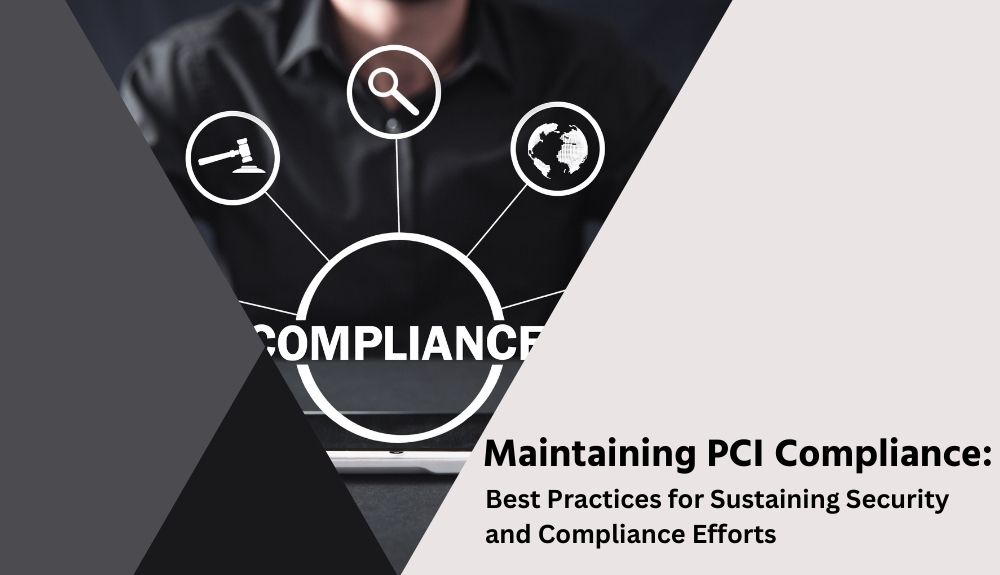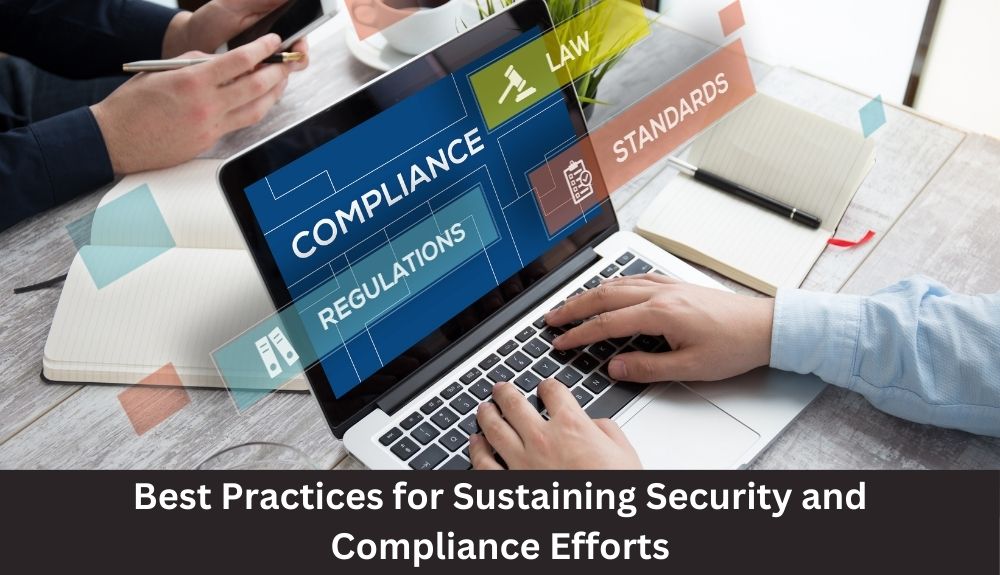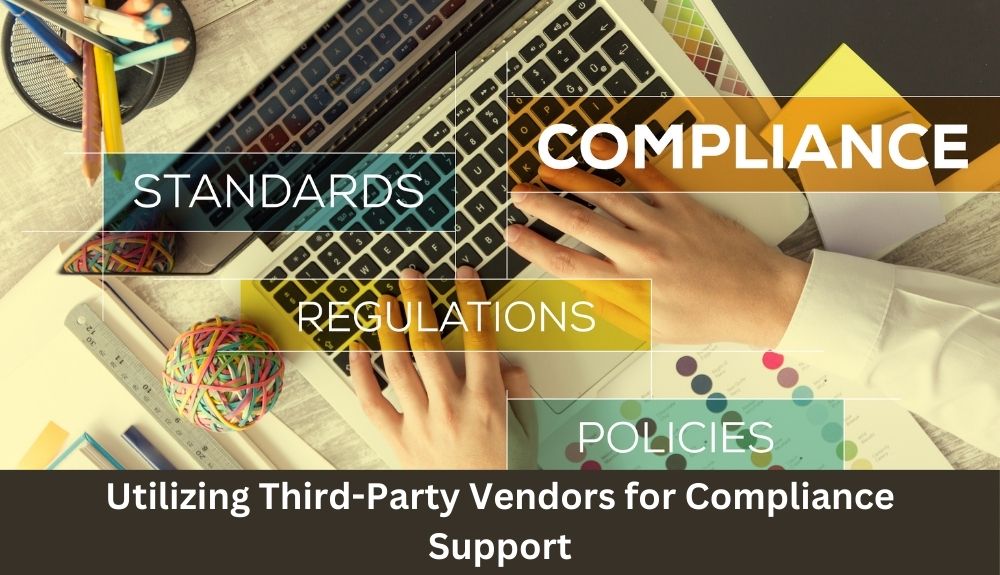
By max February 14, 2024
Welcome to our blog post on maintaining PCI compliance! In the fast-paced digital world we live in, ensuring the security of sensitive customer data is more important than ever. Non-compliance with Payment Card Industry Data Security Standard (PCI DSS) can have serious consequences for businesses, including hefty fines and reputational damage. That’s why it’s crucial to stay up-to-date with best practices for sustaining security and compliance efforts.
In this article, we’ll explore the repercussions of non-compliance and highlight the significance of maintaining PCI compliance. We’ll also provide you with practical tips on how to sustain your security measures effectively. So grab a cup of coffee, sit back, and let’s dive into the world of PCI compliance!
The Consequences of Non-Compliance
When it comes to PCI compliance, the consequences of non-compliance can be severe. Businesses that fail to meet PCI DSS requirements may face significant financial penalties. These fines can range from hundreds to thousands of dollars per month, depending on the level of non-compliance and the number of payment card transactions processed.
But it’s not just about money; non-compliance can also damage a company’s reputation. In today’s age of information sharing and social media, news travels fast when customer data is compromised. A single security breach resulting from non-compliance could lead to a loss of trust among customers and partners alike.
Moreover, failing to maintain PCI compliance opens up businesses to potential legal liabilities. In some cases, affected individuals may take legal action against companies for negligence in protecting their sensitive information.
Beyond financial and legal ramifications, there are operational consequences as well. Non-compliant businesses often find themselves at a competitive disadvantage since many clients now require proof of PCI compliance before engaging in business partnerships or agreements.
The consequences of non-compliance with PCI standards extend far beyond just monetary fines. They include reputational damage, legal liabilities, and even lost opportunities for growth and expansion. It’s crucial for businesses to prioritize maintaining PCI compliance in order to protect both their customers’ data and their own long-term success.
The Importance of Maintaining PCI Compliance
Maintaining PCI compliance is crucial for businesses that handle sensitive customer payment card information. Without proper compliance measures in place, companies risk facing severe consequences such as financial penalties, loss of reputation, and even legal action.
One of the key reasons why maintaining PCI compliance is so important is to protect against data breaches. By adhering to security standards set by the Payment Card Industry Data Security Standard (PCI DSS), businesses can significantly reduce the risk of unauthorized access to customer data.
In addition to safeguarding customer information, maintaining PCI compliance also helps build trust with customers. When individuals know that their payment card details are being handled securely, they are more likely to feel confident in doing business with a particular company.
Furthermore, complying with PCI standards demonstrates a commitment to overall cybersecurity. By implementing robust security measures and regularly assessing risks, organizations can strengthen their overall defense against cyber threats.
Maintaining PCI compliance is not just about meeting regulatory requirements; it’s about protecting your business and your customers from potential harm. Prioritizing security and consistently following best practices ensures that sensitive data remains safe and secure.
Best Practices for Sustaining Security and Compliance Efforts

Regularly Conduct Risk Assessments
One of the key best practices for maintaining PCI compliance is to regularly conduct risk assessments. This involves identifying potential vulnerabilities in your systems and processes, and taking proactive measures to address them. By conducting these assessments on a regular basis, you can stay ahead of emerging threats and ensure that your security measures are up to date.
Implement Strong Access Control Measures
Another important practice is to implement strong access control measures. This includes using unique usernames and passwords, as well as multi-factor authentication where possible. Limiting access privileges based on job roles can also help reduce the risk of unauthorized access.
Encrypt Data and Use SSL Certificates
Data encryption is crucial for protecting sensitive information from being intercepted or accessed by unauthorized individuals. Implementing secure socket layer (SSL) certificates on your website ensures that data transmitted between your server and users’ browsers remains encrypted.
Train Employees on Security Protocols
Educating employees about security protocols is vital for sustaining compliance efforts. Regular training sessions should be conducted to raise awareness about phishing attacks, social engineering tactics, password hygiene, and other cybersecurity best practices.
Utilizing Third-Party Vendors for Compliance Support
Engaging with third-party vendors who specialize in PCI compliance can provide valuable support in maintaining security efforts. These vendors have expertise in implementing effective security controls, monitoring systems for vulnerabilities, and ensuring ongoing compliance with industry standards.
Steps to Take in Case of Non-Compliance
In the event that non-compliance occurs despite all preventive measures taken, it’s essential to have a plan in place beforehand. Promptly report any breaches or incidents to the appropriate authorities while following established incident response procedures within your organization.
By following these best practices for sustaining security and compliance efforts, businesses can effectively protect their customers’ payment card data while minimizing the risk of financial loss or reputational damage associated with non-compliance. Remember: staying vigilant and proactive is crucial in the ever-evolving landscape of cybersecurity threats.
A. Regularly Conduct Risk Assessments
Regularly conducting risk assessments is a crucial step in maintaining PCI compliance and ensuring the security of sensitive data. By regularly assessing potential risks, businesses can identify vulnerabilities and take proactive measures to mitigate them.
During a risk assessment, organizations should evaluate their systems, processes, and controls to identify any weaknesses or areas that may be susceptible to breaches. This includes reviewing network infrastructure, software applications, physical security measures, and employee practices.
By conducting regular risk assessments, businesses can stay one step ahead of potential threats and address any issues before they escalate into major security breaches. It allows for ongoing monitoring and adjustments to security protocols based on emerging threats or changes in technology.
Furthermore, maintaining PCI compliance requires staying up-to-date with evolving industry standards and best practices. Regular risk assessments help ensure that a business’s security posture aligns with these standards by identifying where improvements are needed.
Conducting regular risk assessments is not only essential for sustaining PCI compliance but also for safeguarding customer data from unauthorized access or theft. By taking this proactive approach to assess risks continuously throughout the year instead of just during an annual audit process provides organizations with a stronger defense against potential threats. So make sure your business has a robust system in place for regularly conducting thorough risk assessments!
B. Implement Strong Access Control Measures
Implementing strong access control measures is crucial for maintaining PCI compliance. By controlling who has access to sensitive data, businesses can significantly reduce the risk of unauthorized access and potential breaches.
One effective way to implement strong access control measures is by utilizing multi-factor authentication. This adds an extra layer of security by requiring users to provide multiple pieces of evidence to verify their identity before granting them access. This could include something they know (like a password), something they have (like a physical token or smartphone), or even something biometric (like a fingerprint).
Another important aspect of access control is implementing role-based permissions. By assigning specific roles and privileges to different user groups, businesses can ensure that employees only have access to the information necessary for their job responsibilities. This helps minimize the risk of accidental or intentional misuse of sensitive data.
Regularly reviewing and updating user accounts is also essential in maintaining strong access controls. This includes promptly revoking access for employees who no longer require it due to role changes or employment termination.
In addition, businesses should monitor and log all system activity related to accessing sensitive data. By keeping detailed records of who accessed what information and when, organizations can quickly identify any suspicious behavior or potential security incidents.
By implementing these strong access control measures, businesses can enhance their overall security posture and maintain compliance with PCI standards on an ongoing basis.
C. Encrypt Data and Use SSL Certificates
In today’s digital age, data security is paramount. As businesses handle sensitive customer information, it becomes crucial to implement robust encryption measures to safeguard this data from potential breaches. One effective way to achieve this is by encrypting data and utilizing SSL certificates.
Encryption involves converting plain text into ciphertext using complex algorithms. This ensures that even if unauthorized individuals gain access to the data, they won’t be able to decipher it without the encryption key. By encrypting sensitive information such as credit card details or personal identification numbers (PINs), businesses can add an extra layer of protection against cyber threats.
SSL (Secure Sockets Layer) certificates play a vital role in maintaining PCI compliance. They establish secure connections between a web server and a user’s browser, encrypting any information transmitted during online transactions or communications. By employing SSL certificates, businesses demonstrate their commitment to protecting customer data and building trust with their target audience.
It’s important for organizations handling payment card information to not only implement encryption but also regularly update SSL certificates. Outdated or weakly configured certificates can leave vulnerabilities that hackers may exploit. By staying up-to-date with industry standards and best practices for certificate management, companies can ensure the ongoing security of their customers’ data.
Implementing encryption and SSL certificates should go hand-in-hand with other security measures like strong access controls, regular risk assessments, and employee training on security protocols. Together, these practices create a comprehensive approach towards maintaining PCI compliance while safeguarding valuable customer information from potential cyber threats.
D. Train Employees on Security Protocols
One crucial aspect of maintaining PCI compliance is ensuring that all employees are adequately trained on security protocols. After all, your organization’s security is only as strong as its weakest link.
Start by conducting thorough training sessions to educate employees about the importance of PCI compliance and the potential consequences of non-compliance. Emphasize the role they play in protecting sensitive customer data and how their actions can impact the overall security posture of the business.
Cover topics such as password management, secure handling of payment card information, and recognizing common phishing or social engineering tactics. Make sure employees understand how to identify potential security threats and what steps to take if they suspect a breach or encounter suspicious activity.
Consider implementing regular refresher courses or ongoing training programs to reinforce good cybersecurity practices. Technology evolves rapidly, so it’s important for employees to stay up-to-date with current best practices and emerging threats.
Encourage an open culture where employees feel comfortable reporting any concerns or incidents without fear of retaliation. This fosters a proactive approach towards maintaining a secure environment.
Remember that not all staff members may have the same level of technical knowledge or understanding when it comes to cybersecurity. Tailor training materials accordingly, using plain language explanations and providing practical examples whenever possible.
By investing in comprehensive employee training on security protocols, you empower your workforce to become active participants in safeguarding sensitive data and sustaining PCI compliance efforts. This ongoing education will help create a culture where cybersecurity awareness becomes second nature for everyone within your organization
Utilizing Third-Party Vendors for Compliance Support

When it comes to maintaining PCI compliance, one of the most effective strategies is to enlist the help of third-party vendors who specialize in compliance support. These vendors have extensive knowledge and experience in navigating the complex landscape of security and compliance requirements.
By partnering with a reputable vendor, businesses can benefit from their expertise and resources while focusing on their core operations. These vendors can assist with various aspects of PCI compliance, such as conducting security assessments, implementing necessary controls, and providing ongoing monitoring and support.
Working with third-party vendors also provides an added layer of assurance. They are well-versed in industry best practices and stay up-to-date on evolving regulations. This means that businesses can rely on their guidance to ensure they remain compliant even as requirements change.
Furthermore, utilizing these external experts allows businesses to tap into specialized technologies that may not be available in-house. With access to cutting-edge tools for threat detection and prevention, businesses can strengthen their security measures beyond what they could achieve independently.
However, it’s important for organizations to conduct thorough due diligence when selecting a vendor. Look for providers with a strong track record in PCI compliance services, including certifications or accreditations from relevant governing bodies.
In conclusion, partnering with third-party vendors for compliance support is crucial for sustaining security efforts and ensuring long-term adherence to PCI standards.
organizations should carefully choose a trusted partner who understands the intricacies of PCI compliance. By doing so , you will gain peace of mind knowing that your business remains secure while reducing the burden placed on internal teams tasked with managing this critical aspect of your operations. Working hand-in-hand with experienced vendors enables companies to maintain robust security measures consistently without compromising day-to-day business functions.
Steps to Take in Case
While maintaining PCI compliance is crucial, it’s also important to be prepared for any potential security breaches or non-compliance issues that may arise. Here are some steps you can take in case of such incidents:
1. Identify and Contain the Breach: As soon as you become aware of a breach or non-compliance issue, it’s essential to act quickly. Determine the extent of the breach and contain it to prevent further damage.
2. Notify Relevant Parties: Depending on the nature and scale of the breach, you may need to notify various parties such as your customers, payment card brands, acquiring banks, and law enforcement agencies. Promptly informing them will help mitigate any potential risks and ensure appropriate actions are taken.
3. Conduct Forensic Investigation: Engage forensic experts who can investigate the cause and scope of the breach thoroughly. This investigation will provide insights into how the incident occurred so that you can strengthen your security measures accordingly.
4. Implement Corrective Measures: Once you have identified vulnerabilities or weaknesses in your systems through forensic analysis, take immediate steps to address them. Update security protocols, install patches or upgrades if necessary, and enhance access controls based on recommendations from experts.
5. Review Compliance Procedures: Use this opportunity to review your existing compliance procedures and make any necessary improvements or updates based on lessons learned from the incident.
6. Communicate with Stakeholders: Transparent communication is key during these times of crisis. Keep all relevant stakeholders informed about what happened, how it was addressed, and what measures are being implemented moving forward.
7. Conduct Regular Audits: After a security incident occurs – whether it involves a data breach or non-compliance – conducting regular audits becomes even more critical than before. These audits should not only focus on technical aspects but also include processes related to employee training adherence to policies.
By following these steps diligently after a security incident occurs while maintaining PCI compliance continuously beforehand, you will be better equipped to handle any challenges that come your way.
